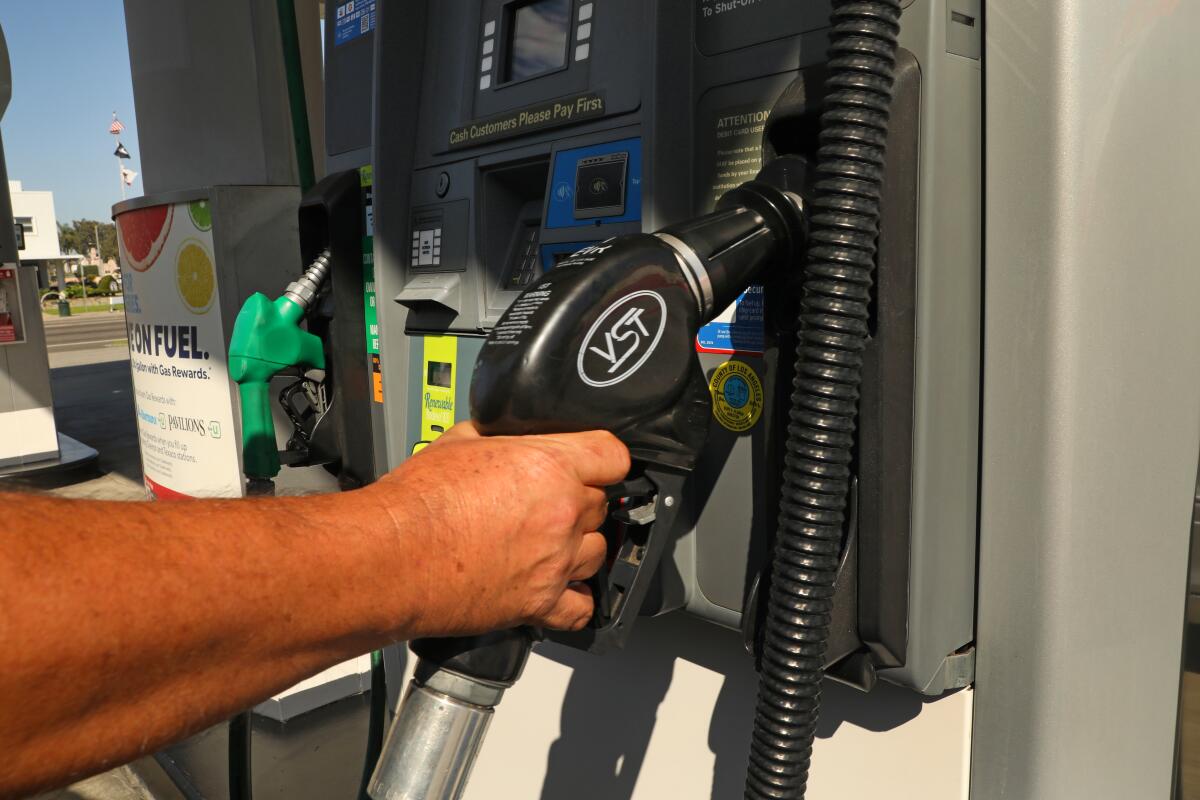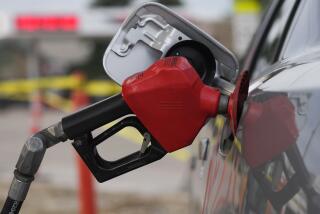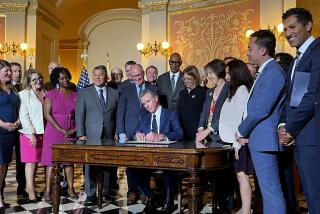Ready for a summer road trip? Here’s why a visit to the gas pump could cost you more in July

- Share via
Bad news if you are planning a road trip this summer.
Prices at the pump in California will likely jump in July, the result of a state sales tax hike and stricter rules on refineries to encourage them to create lower-carbon fuels. The combined increases could boost gas prices by nearly 70 cents, although industry experts and state officials disagree on how steep the price increase may be.
Californians and drivers nationwide typically see a spike in fuel prices during the month of June, but the oil supply market is currently outweighing demand, leading to slightly cheaper prices compared to 2024, according to the American Automobile Assn.
As of Wednesday, the current average for the state is $4.64 per gallon compared to $4.81 on the same day last year, a 17-cent decrease.
Even though forecasters predict global oil inventories will continue to grow past the month of July, relieving pressure on oil prices, California consumers won’t feel any reprieve next month.
For the record:
6:46 p.m. June 25, 2025An earlier version of this article incorrectly said oil supply was predicted to grow over the next five months. It is, however, expected to grow past July. It also said California had a goal of cutting fuel use by 49% by 2045. The goal is 94%.
On July 1, California’s gas and diesel excise tax will increase to 61.2 cents per gallon from the current rate of 59.6 cents per gallon, according to the California Department of Tax and Fee Administration. Diesel fuel will also increase from 45.4 to 46.6 cents per gallon.
The state adjusts its fuel tax rates based on data from the Department of Finance annually, and the new rate goes into effect on July 1 of each year.
The quixotic goal of 100% carbon-free electricity is increasing the gap between rich and poor in California.
This isn’t the only factor that will drive up gas prices this summer.
In 2024, the California Air Resources Board approved amendments to the state’s Low Carbon Fuel Standard program, which was established in 2011 with two goals in mind: shifting the state’s fuel dependence toward lower-carbon fuels and helping the state reach the goal of cutting fuel use by 94% by 2045.
The approved amendments are meant to incentivize the value of lower-carbon fuel and impose stricter limits on carbon intensity fuels so gasoline producers are encouraged to create less-polluting fuels.
But that extra cost to comply with the new regulations will be passed onto motorists at the pump.
Last year, CARB estimated the amendments could raise gasoline prices by 47 cents a gallon, or $6.4 billion a year. Months later the agency walked back its estimate and said it would not provide the public with a revised one.
The agency previously told The Times that no new numbers would be forthcoming because “what we are not equipped to do is analyze what the effect would be on retail gasoline prices”; it instead analyzes economic growth, job creation and public health.
Danny Cullenward, vice chair of the California’s Independent Emissions Market Advisory Committee, estimated that near-term affects from the program amendments on gas prices could be an additional 65 cents a gallon this year, 85 cents per gallon by 2030, and nearly $1.50 per gallon by 2035.
In an email sent to The Times on Wednesday, CARB pushed back against predictions of severe gas price hikes due to its program. “The idea of a 65 cents a gallon price increase has become one version of the misinformation spread about the Low Carbon Fuel Standard over the past few months.
“Independent experts have projected Low Carbon Fuel Standard pass-through costs could range from as low as 5 cents per gallon to as high as 8 cents per gallon, much lower than widely reported projections such as the one [The Times] mentioned,” said Dave Clegern, a public information officer for CARB.
Experts expect Trump’s new tariffs will increase the price of electric trucks and buses, imperiling California climate goals.
AAA said it didn’t have an estimate yet on how the amendments to the Low Carbon Fuel Standard program would affect gas prices next month, “especially with the recent drop in oil prices.”
“If those stay low, the impact could be smaller,” said Gianella Ghiglino, spokesperson for AAA of Southern California.
Predicting gasoline prices is difficult now because of several potential future disruptions to the country’s oil supply, according to the U.S. Energy Information Administration.
Several global incidents have the potential of disrupting oil supplies, including wildfires around Canada’s major oil facilities in Alberta, Libya’s announcement of a possible failure to fulfill on its oil exports, escalating tensions in the Middle East, and ongoing trade negotiations between the United States and its trading partners, according to the federal agency’s global forecast.
In addition to global effects, at the state level, two large California oil refineries are shutting down by 2026, eliminating nearly 300,000 barrels per day, MoneyWise reported.
Drivers won’t be able to avoid the price hike at the pump in California but there are ways to locate gasoline stations with the cheapest prices.
How to find cheaper gas near you
There are several apps and websites that can help you find lower prices near your traveling route.
- The Auto Club app for AAA members shows the closest gas stations that are charging the lowest price, anywhere in the United States.
- Its app and its website, Gasbuddy, displays real-time pump prices near you.
- The Gas Guru app can search for gas stations by price, fuel grade and distance, as well as show prices in your area.
- Mapquest, Google Maps and Waze have a feature that enables you to see gas prices on the route of your trip.
More to Read
Sign up for Essential California
The most important California stories and recommendations in your inbox every morning.
You may occasionally receive promotional content from the Los Angeles Times.
















